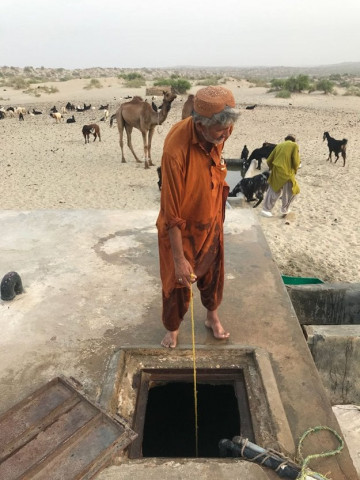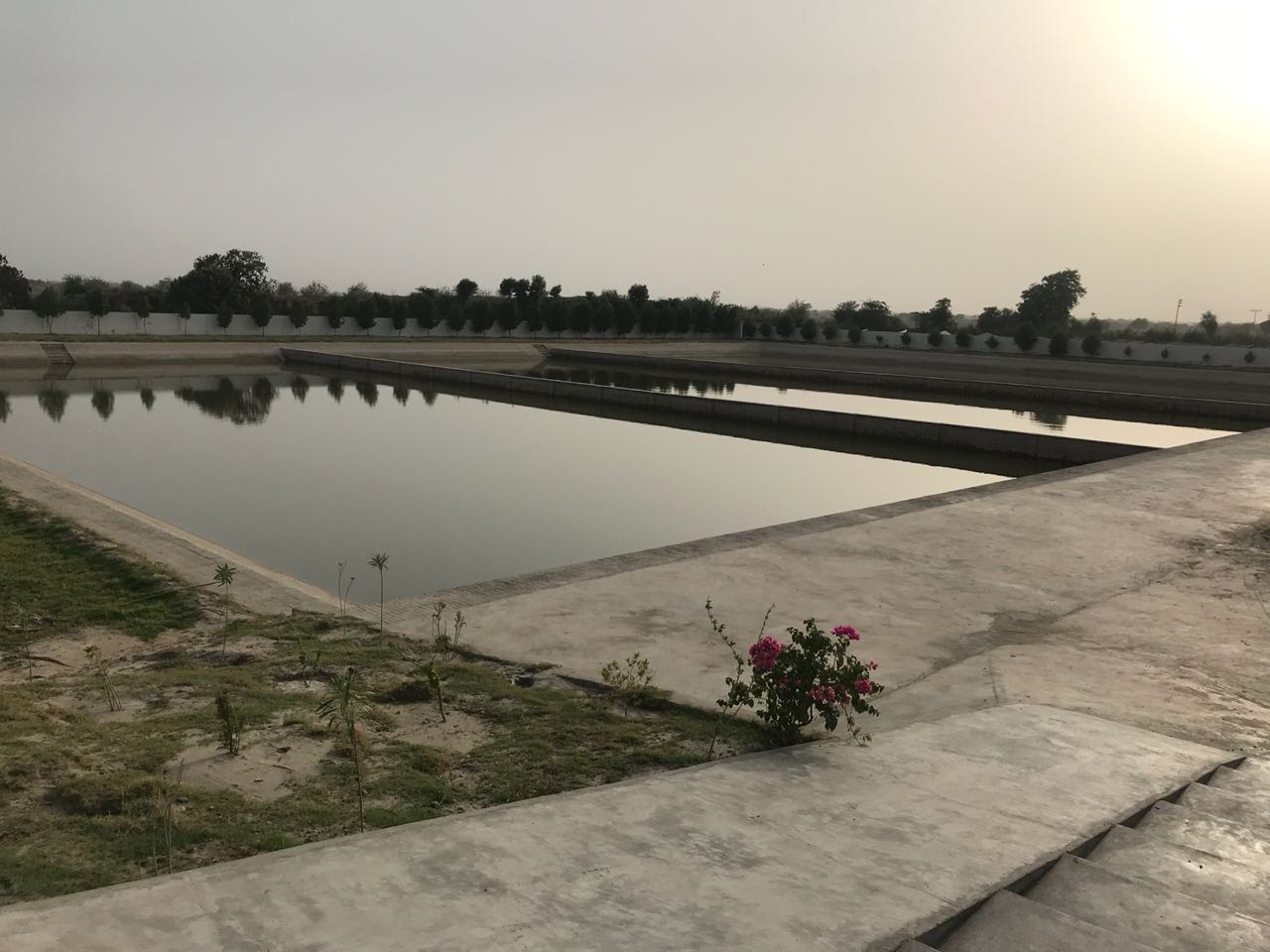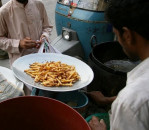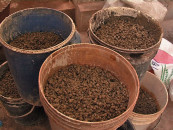New pipeline provides lifeline to Acchro Thar
Residents of the 101 villages now receive fresh water for the first time in their lives

Residents of 101 villages of Acchro Thar get potable water through the new pipeline installed in the area. PHOTO: EXPRESS
"Earlier, inhabitants of these villages would collect rainwater in small reservoirs outside their homes," said Faqeer Rasool Bux, a resident of Kak village. The water in these reservoirs would be used for the next six months, depending on the rainfall that year.
 The project, which was initiated in July 2017, was made operational on March 31, 2018. PHOTO: EXPRESS
The project, which was initiated in July 2017, was made operational on March 31, 2018. PHOTO: EXPRESSWhen The Express Tribune visited the area in early June, it seemed Eid had come early for these residents. Their faces shone as they declared that they now had access to line water - for the first time in their lives. "With no permanent source of water, these villagers, along with their livestock, used to migrate in the dry months to places where they could find water," said Bux.
'Pakistan's water woes set to worsen'
A major part of the Acchro Thar area is inhabited by members of the Hur Jamaat (followers of Pir Pagara). "We had been demanding the provision of fresh water for the past decade," said one resident, who claimed to be a member of the Hur Jamaat, but pledged to now vote for the Pakistan Peoples Party (PPP). "This year, our demand was finally met by PPP MNA Shazia Marri." The PPP had managed to secure the seat for the first time since 1977.
Taj Muhammad, a resident of Kak, the first village in Acchro Thar, was all praise for Marri. He added, however, that he would still vote for whoever Pir Pagara nominated as the candidate from the constituency - one of the largest in Sindh in terms of land area. The largely barren stretch lies adjacent to the bordering state of Rajasthan in India.
 With no permanent source of water, these villagers, along with their livestock, used to migrate in the dry months to places where they could find water, a villager said. PHOTO: EXPRESS
With no permanent source of water, these villagers, along with their livestock, used to migrate in the dry months to places where they could find water, a villager said. PHOTO: EXPRESSIn the 2013 general elections, Marri had lost the polls to Pir Sadruddin Shah, only to win it later in by-polls after Shah vacated the seat. During her tenure, she came true on her promise to provide water to the residents, under the Shaheed Mohtarma Benazir Bhutto Fresh Water Project.
"I came to know that the 30,000 residents of Acchro Thar were deprived of potable water, but none of the governments in the past had given the issue any importance," said Marri. Besides the villages, the five Rangers checkposts manning the border too had no access to water.
MoU inked to address water shortage in Gwadar
"We rely on livestock for sustenance, so water is essential to us," said another villager, Allah Dino Rajar. "We are thankful to God and the previous government, which installed these pipelines to provide a lifeline to our villages, as earlier it was almost impossible to survive."
The project was initiated on July 13, 2015. According to the blueprints, water is provided from the lower Nara Canal to Tar Hashim village via Jesro village. The 12-inch main line travels 56 kilometres into Acchro Thar, where it meets sub-lines that travel another 186 kilometres into each village.
 Reservoirs have been constructed in each village to store water. PHOTO: EXPRESS
Reservoirs have been constructed in each village to store water. PHOTO: EXPRESSBesides the 101 villages and five Rangers checkposts connected through the pipeline network, reservoirs have been constructed in each village for storage.
These 106 underground reservoirs can store between 5,000 and 50,000 gallons of water, depending on the size of the village. The reservoirs at the Rangers check posts can store up to 200,000 gallons.



















COMMENTS
Comments are moderated and generally will be posted if they are on-topic and not abusive.
For more information, please see our Comments FAQ